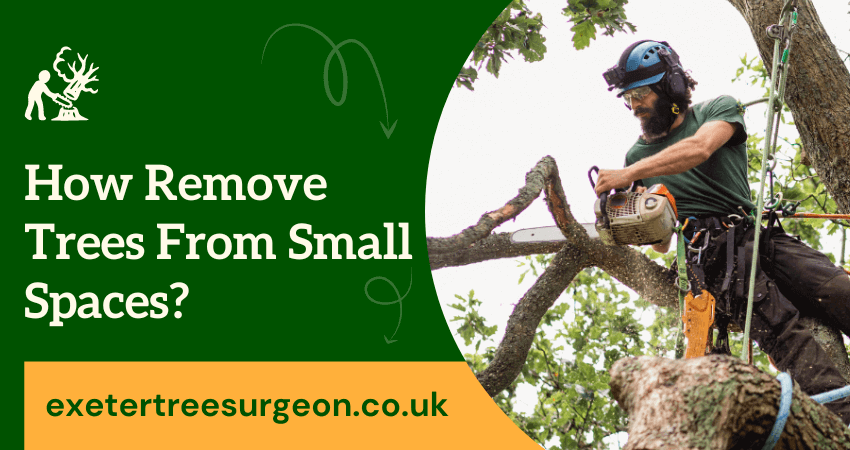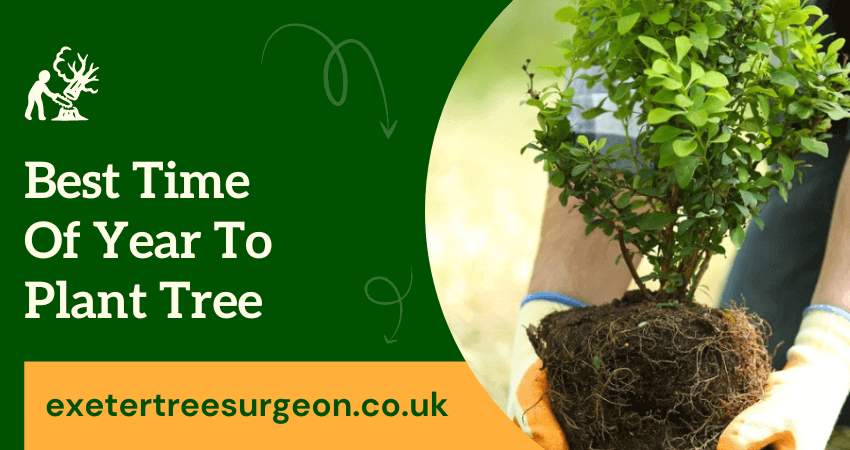Removing large trees from small spaces requires specialized knowledge and precision. It can be a daunting task, as the wrong move could potentially result in serious damage to nearby structures or people. To ensure that the removal of your tree is successful and completed safely, it’s important to understand the best techniques and tools for doing so.
In this blog post, our team of professional arborists will explain the process of safely and efficiently removing large trees from limited spaces.
We’ll discuss the tools needed, what methods work best in these scenarios and most importantly – how to stay safe while completing this job. So strap on your gloves and get ready – let’s explore ways to remove trees no matter their size or location!
Remove Large Trees From Small Spaces
When removing large trees from small spaces, the most important step is to plan and assess the situation. You should consider factors such as the size of your tree, its proximity to power lines and buildings and any roots or branches that might be in the way.
Once you’ve gathered this information, you can begin by preparing the area around your tree. Safety should always be a priority when cutting down a tree – regardless of location. Make sure that anyone who is near the work site is aware that work is taking place and keep them at least 25 feet away from where you are cutting down the tree.
Now it’s time to choose your tools! If you have access to specialized equipment like an excavator or bobcat, this can be an ideal way to remove the tree. But for small spaces, hand tools may be a better option as they are more manoeuvrable and require less space.
You should also consider renting a stump grinder if you don’t have one on hand. This tool is essential for removing any remaining roots that could potentially cause damage in the future.
Once all of your tools are ready, you can begin cutting down the tree. Make sure that you cut it in sections no larger than 4 feet so that they can be safely handled and removed from the area without causing further damage. Finally, it’s crucial to clean up after yourself by properly disposing of all debris and making sure there aren’t any hazards left behind.
Removing large trees from small spaces can be a challenging and dangerous task, but with the proper tools, techniques and safety measures in place – it’s certainly doable. By following these steps and guidelines, you can successfully remove your tree safely and efficiently!
Tree Removal Techniques
Several techniques can be used to remove trees safely and efficiently. These include Felling the tree, Limbing the tree, Bucking the tree and Stump removal.
- Felling the tree
Felling the tree is a technique used to cut down trees to remove them from an area. It involves cutting a notch in the tree at about a 45-degree angle and then making a series of cuts along the notch until the tree falls.
This technique should only be done by experienced professionals who understand how to safely cut down trees without damaging nearby structures or people.
- Limbing the tree
Limbing is the technique used to remove branches from a standing tree. The branches must be cut close to the trunk to remove them safely. A professional tree service needs to use the proper equipment and techniques when climbing a tree to avoid damage to nearby structures or people.
- Bucking the tree
Bucking is another technique used by professional tree services to remove trees from an area. It involves cutting the tree into sections of manageable size, which can then be removed from the area.
The tree should be cut in a way that ensures limbs and branches are not left behind, as this could pose a hazard to nearby people or structures.
- Stump removal
Once the tree has been felled and bucked, the stump must be removed. Stump removal is a difficult and dangerous process that should only be done by experienced professionals.
It involves digging around the stump, removing all roots and debris and then grinding the remaining stump down to ground level.
These tree removal techniques are important to understand when having trees removed from an area. It is always best to contact a professional tree service, who will have the proper tools and experience to safely remove trees.
Some dangers associated with removing large trees
Here are some points to consider:
- Poor Drainage: Removing large trees from small spaces can disrupt drainage patterns and cause water to pool in certain areas, resulting in soil erosion and damage to the landscape.
- Loss of Habitat: When large trees are removed, it reduces the food sources available for local wildlife, which can lead to a decrease in biodiversity.
- Unstable Soil: Removing large trees can destabilize soil beneath the surface due to root systems no longer being present and/or proper compaction techniques not being implemented during construction or landscaping processes.
- Increased Risk of Wind Damage: Without larger trees providing windbreaks for other plants, shrubs and smaller plants may be more prone to wind damage or uprooting.
- Loss of Shade and Increased Temperatures: The removal of large trees can cause an increase in temperature due to the lack of natural shade, resulting in a warmer and less comfortable environment for people and animals.
- Reduced Carbon Sequestration: Large trees are excellent at sequestering carbon from the atmosphere, so removing them from small spaces can decrease air quality by not helping with the reduction of carbon emissions.
- Increased Risk of Fire: Removing large trees can create areas that are more prone to fires, as the trees previously acted as a barrier or firebreak between flammable material and potential sources of ignition.
- Adverse Impact on Aesthetics: The removal of large trees from small spaces can hurt aesthetics due to gaps in the landscape no longer being filled with nature’s beauty.
- Loss of Privacy: Large trees provide a sense of privacy or buffer between homes and public areas. Removing them can reduce the number of natural barriers in place and cause a loss of privacy.
Common myths about tree removal that we often hear
Here are a few of the most common myths about tree removal:
- Removing trees is bad for the environment
This is a common misconception and not true. In many cases, tree removal can acutely be beneficial to both the environment and public safety. The key is a careful evaluation of each situation and using proper techniques when possible.
- Tree removal is expensive
While it’s true that tree removal can be costly, it’s often less expensive than not removing the tree. Depending on the size and condition of the tree, it can be more expensive to leave it standing and potentially cause damage from falling branches or roots.
- Tree removal is always dangerous
Tree removal doesn’t have to be dangerous if the right techniques and procedures are followed. Professional tree removal companies take great care to ensure that the tree is removed with minimal risk to people and property.
- You don’t need a professional
Tree removal can be a dangerous undertaking and is best left to the professionals. Attempting to remove a tree without proper tools, experience and safety measures can result in significant property damage and even injury to those involved.
Final Thoughts
There are many factors to consider when determining how to safely and effectively remove a large tree from a small space. By taking the time to understand all of your options, you can avoid potential hazards and choose the best method for your particular situation.
If you need assistance removing a large tree from your property, contact a local tree removal service. With their experience and expertise, they can help you get the job done quickly and safely.



